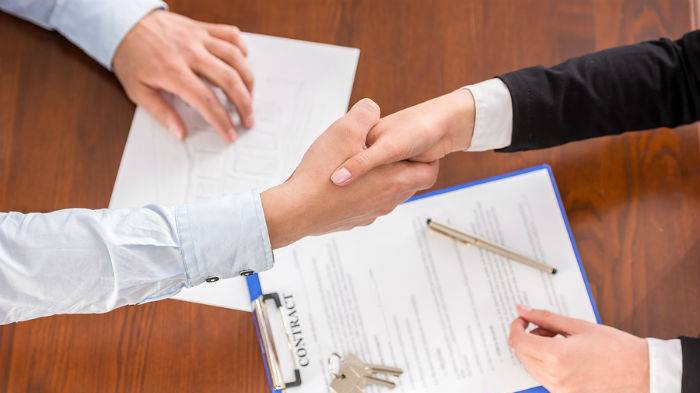The red tape can be the most frustrating thing about buying a house.
After you've sent off your mortgage application, you'll need to hire a licenced solicitor to sort out the legal part of the home buying process.
Here we break it down so it’s easier to understand.
As of 1 April 2025, the Stamp Duty Land Tax in England and Northern Ireland has changed
What is conveyancing?
Conveyancing is just a fancy word for the legal transfer of property from 1 person to the next.
Typically, conveyancing involves:
- Acting as an intermediary between you, the mortgage lender and the seller
- Looking over any contracts that pass between you
- Dealing with the Land Registry
- Sorting out stamp duty
- Transferring money during a sale
- Checking for structural risks such as subsidence
It’s possible to do all this yourself. But unless you know what you’re doing, it could delay things quite a bit.
In Scotland, you'll work with a conveyancing solicitor who'll be a member of the Law Society of Scotland. It's likely they'll also work as your estate agent. The rest of the UK uses professionals who are specifically qualified in conveyancing and will instruct a separate estate agent to help market and sell the properly.
The average conveyancing fees are between £800 to £2000, but it can vary wildly, so get a few quotes before you settle.
Get more information about mortgages
What's a surveyor?
A surveyor is someone who's responsible for identifying any major structural problems with the house and to provide professional advice on the matter.
The surveyor provides a report, sometimes known as a homebuyers survey or a condition report. The report provides detail on the overall condition of the house you want to buy.
There are different levels of the homebuyer report depending on how extensive you want the survey to be.
What type of survey do I need?
Aside from the valuation, there are 3 types of surveys you can have for your homebuyer report:
-
RICS Home Survey Level 1 – this the most basic survey you can get. The survey uses a 'traffic light' rating to determine the condition of parts of the property. With this type of survey you won't receive advice, but it does highlight anything high-risk.
-
RICS Home Survey Level 2 - this survey is usually more suitable for conventional properties that visually appear to be in a resonable condition. It tests the walls and floor for problems such as subsidence and damp. It’ll also give advice on any urgent repair work that’s needed.
-
RICS Home Survey Level 3 – this is typically done for older houses or 'non-standard construction' buildings, such as properties with thatched roofs. This survey will look under floorboards, behind walls and in the cellar if you have one. This should tell you everything you need to know about the house.
If the recommendations from the survey are costly, you could use them to renegotiate your offer on the house.
Once all surveys have been complete and everyone’s happy with the state of the property, you’re almost ready to exchange contracts and move in.
What's the difference between conveyancing searches and a survey?
A survey is looking specifically at the structural and physical condition of the property. The surveyor should be able to tell you if your property has any issues, such as damp or subsidence, that needs to be quickly looked at.
The most basic kind of survey you can get is a mortgage valuation, which is what lenders use to assess whether the value of your property matches how much they're lending you.
Conveyancing searches aren't as comprehensive, they generally look at any legal and environmental issues surrounding your property.
For example, the conveyancing search might tell you about a flood risk in your area. Or, whether there's any planned developments that may impact your living conditions in the future.
Both searches provide a sense of the property's value, which can impact the likelihood of your lender granting you a mortgage.
Valuations
Some mortgage lenders choose to send out a surveyor to do a valuation of the property to figure out its value.
This minimises the risk to the lender in case they have to repossess the house and it’s worth less than they thought.
The valuation should also highlight any obvious problems with the house.
Bear in mind that a valuation is not a proper survey – it’s purely to figure out how much the house is really worth.
A valuation is essential and usually ordered by the lender, but the survey is only recommended.
If you want a more comprehensive report, you’ll need an independent survey.
Stamp Duty
Stamp duty is a land tax you must pay, depending on where you live and the value of the property.
It's known as Land and Buildings Transaction Tax in Scotland and Land Transaction Tax in Wales.
As of 1 April 2025, the Stamp Duty Land Tax in England and Northern Ireland has changed. In England and Northern Ireland, if you bought a house worth £275,000, you’d pay:
- £0 on the first £125,000 (0%)
- 2% on the next £125,000 (from £125,001 to £250,000) = £2,500
- 5% on the remaining £25,000 (from £250,001 to £275,000) = £1,250
- Total: £3,750
In Scotland, if you bought a house worth £275,000, you'd pay:
- £0 on the first £145,000 (0%)
- £2,100 on the amount between £145,001 - £250,000 (2%)
- £1,250 on the remaining £25,000 (5%)
- Total: £3,350
In Wales, if you bought a house worth £275,000, you'd pay:
- £0 on the first £225,000 (0%)
- £3,000 on the remaining £50,000 (6%)
- Total: £3,000
The rate also varies if the home is not the only residental property you own you or you have another buy-to-let property.
Also, if you're a first-time buyer you may be exempt from paying stamp duty, for example if your property value in England is below £300,000. You'll need to pay a 5% stamp duty on the portion of the property between £300,001 - £500,000. You do not qualify for relief for properties worth over £500,000.
You can use our stamp duty calculator to work out exactly how much stamp duty you might pay on your home.







